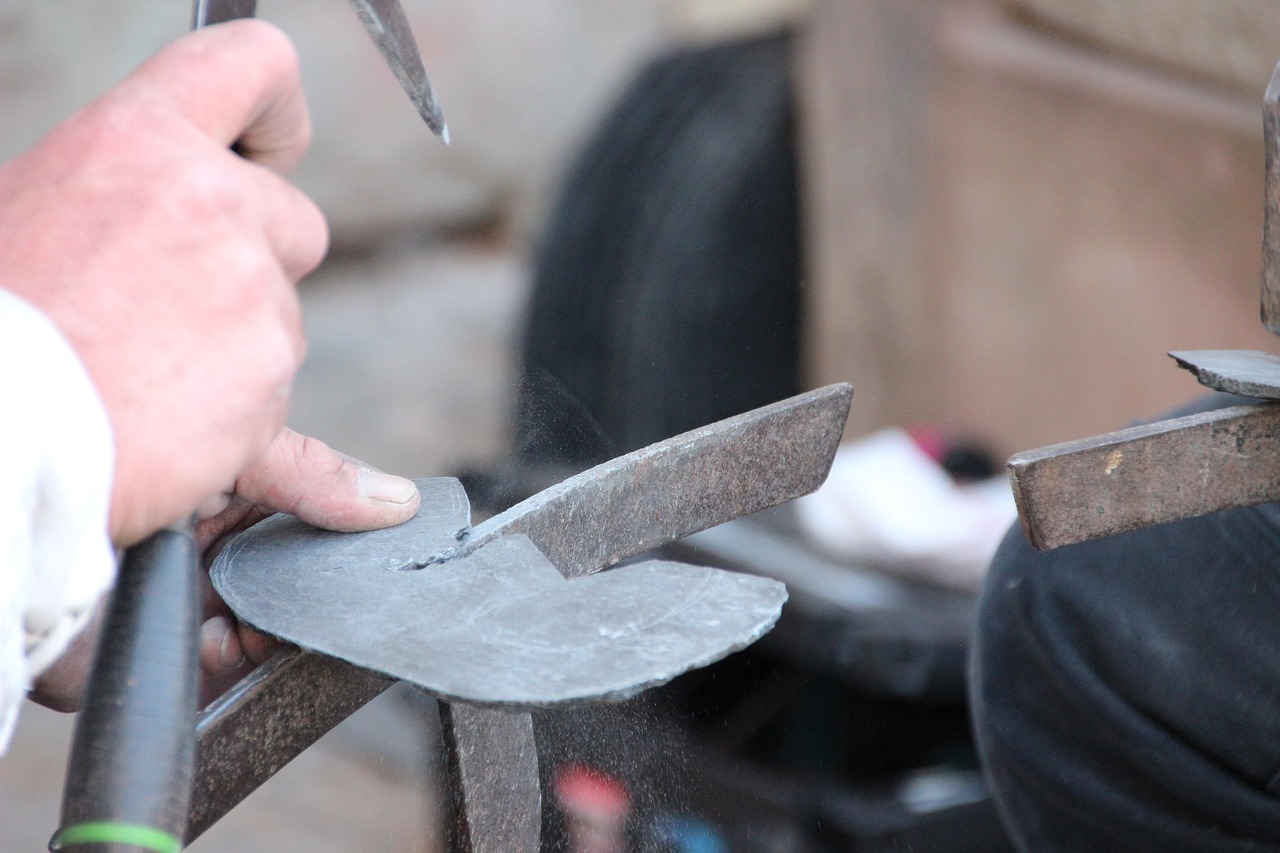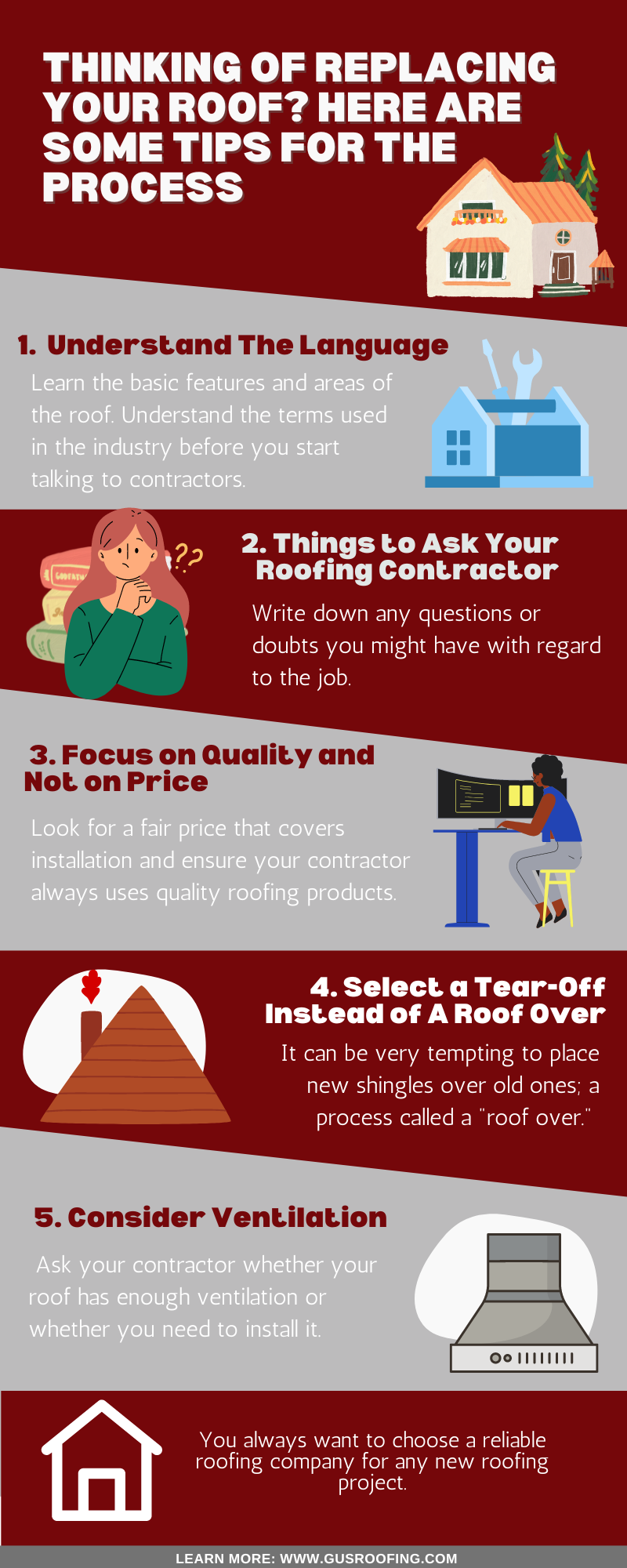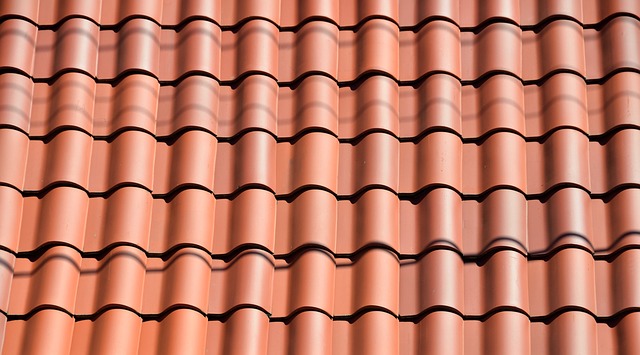Thinking Of Replacing Your Roof? Here Are Some Tips For The Process
You know that setting up buckets to catch the rain coming into your living room just isn’t going to cut it. There are no giant umbrellas to keep the rain from coming in. If your roof is leaking, there is no question that you need a roof replacement, but why wait until things get this desperate. Curling asphalt shingles and frequent repairs are always a telltale sign that you need to start thinking about getting your roof replaced.
Great! There are just a few problems, right? It’s going to be expensive, and where do you find a reliable roofing contractor. Yes, replacing a roof can be costly, but it can be even more costly to fight mold and mildew that infiltrates your home caused by a leaky roof.
If you’re tired of dealing with messy roof repairs, it may be time for a new roof. We know you probably have many doubts and questions, so maybe these ten tips can get you started in finding the information you need to get the job done cost-efficiently and quickly.
Understand The Language
Learn the basic features and areas of the roof. Understand the terms used in the industry before you start talking to contractors. Here are the basic parts of the roof you really should know:
Shingles – Small asphalt squares that are put on as the top layer of the roof.
Decking – It is a plywood roof on which the shingles are attached.
Underlay – A water-resistant protective barrier that is laid over the decking and under the shingles. In older homes, the underlay may have tar paper over it.
Roof vents – The small holes or squares on the roof that are covered with some kind of vent attachment to keep heat out of the attic.
Things to Ask Your Roofing Contractor
Write down any questions or doubts you might have with regard to the job. Ask your roofing contractor before or after he gives you a roof installation quote. Some of these questions might be:
Are you licensed and bonded?
Do you have any insurance coverage? What Kind?
What kind of warranty do you offer?
Do you need any permits?
Can you show me any prior work you’ve done in this area before?
Focus on Quality and Not on Price
Everyone needs to save money, and price certainly comes to mind with this type of project. Still, you want to base most of your decision on the quality of work rather than on the project’s cost. Look for a fair price that covers installation and ensure your contractor always uses quality roofing products.
When you get an estimate, be sure to ask what’s included in your price. Is the cost of the materials included? What does the cost include? Are the permits included?
Select a Tear-Off Instead of A Roof Over
It can be very tempting to place new shingles over old ones; a process called a “roof over.”
Although the “roof over” does cut labor costs, it is a shortcut that has its problems. “Roof over”s often shorten the lifetime of the new shingles because of heat and moisture buildup on the old shingles.
The underlying decking may also have problems that you can’t see unless you tear off the old roofing. A “tear-off” is your better option than a “roof over.”
Consider Ventilation
Make sure your attic gets ventilated, as it will help the roof last longer. Proper ventilation reduces attic temperatures, which can be extremely high in the summer. Ventilation also helps reduce moisture in winter.
Ask your contractor whether your roof has enough ventilation or whether you need to install it. Be sure to have the cost included in the quote if the roof needs added ventilation, info here.
What do you do if the decking is in bad shape?
When did contractor remove the shingles of the old roof, he may find that the decking is in bad shape. If there are areas where the plywood is Warped or has been damaged by humidity, the contractor will need to replace it. So you should consider it within your budget and ask your contract beforehand.
Consider using Thicker Shingles.
Shingles vary in size and color. But there are only two basic Types: Three Tab and Architectural. Architectural shingles are the better option because they are thicker, but they also cost more.
What Is the Wind Warranty?
Be sure to get shingles that are wind-resistant if you live in an area prone to high winds. Some shingles are wind-resistant up to 60 miles per hour.
What Comes Next?
The one thing that many homeowners failed to do is to find out about after-sale services. Does the contractor offer a guarantee of your satisfaction, and does he follow up to ensure the newly shingled roof is holding up? One important consideration is to ask yourself whether the company will be around in the next 10 to 15 years. You always want to choose a reliable roofing company for any new roofing project.
Need help with roof replacement? Don’t hesitate to reach out to: https://www.gusroofing.com/




 https://www.gusroofing.com/
https://www.gusroofing.com/